
In recent years some rope manufacturers have challenged the conventional belief that a thicker diameter means a safer rope. They have primarily done this by adding aramid to the rope's construction, which significantly increases its resistance to cutting. This is particularly important because rope cutting is the most common type of rope failure. In this review we take a look at Mammut's 8.0 Alpine Core Protect Dry Rope, an 8mm half/twin rope with aramid technology. While we're concentrating on the thin one, for those looking to benefit from the same technology in a single rope, there's also a 9.5mm Alpine Core Protect Dry Rope.
First off we'll take a quick look at the construction and benefits of climbing ropes that use aramid.
Why is aramid used in climbing ropes?
Aramid is a highly cut-resistant fibre that can be used to increase the overall cut resistance of climbing ropes while allowing for a reduction in diameter and weight. The major drawback this brings is that aramid, being a static fibre, reduces the rope's dynamic properties. Edelrid pioneered its use in climbing ropes, and Mammut have since followed with their own design. Both companies have extensively researched and tested to improve rope safety, especially in scenarios where edge cuts are a risk.

For climbers interested in learning more about this, the YouTube channel "Hard is Easy," provides an excellent deep dive at Mammut's testing facilities that is fascinating, and at times, terrifying. One of the main takeaways is that dynamic fall scenarios are complex, and a realistic, standardized test for rope cut resistance is still lacking, making it difficult for consumers to compare ropes across brands. However, as a climber, it's encouraging to see these innovations aiming to keep us all safer in the mountains.
The construction of Core Protect, and comparison with Edelrid's aramid ropes
If you are considering buying a Mammut Core Protect rope, it's worth comparing them with Edelrid aramid ropes to understand the pros and cons of each construction method:
- Edelrid integrates aramid directly into the outer sheath during the kernmantel process, slightly decreasing the rope's dynamic properties.
- Mammut's approach uses an aramid sleeve between the outer sheath and core. In the sleeve, aramid is wrapped around nylon strands, allowing the static fibres to stretch during loading, thus keeping good dynamic performance during falls.
it's great to carry a lighter rope whilst still feeling safe
Watching the fall tests in the Hard Is Easy video will demonstrate that limiting dynamic properties can lead to alarming results.
So, has Mammut developed a superior technology? Like anything there are pros and cons to both. The Mammut Core Protect rope's thinner outer sheath, required to accommodate the aramid sleeve, will likely reduce durability - if the sheath wears through, the rope must be retired before reaching the secondary sleeve. Handling is also a theoretical concern - does the middle sleeve affect slippage between the three layers? I'll try to address these questions based on my experience testing the the 8.0 Alpine Core Protect Dry Rope in the next section.
In Use
Handling:
As with all thinner ropes, the 8mm Alpine Core Protect does need attentive handling when belaying or abseiling since it may not grab in a belay device as readily as a thicker rope - a point that's probably worth bearing in mind for beginners in particular. The rope feeds smoothly through my belay device with no noticeable slippage or handling issues. Neither have I had any severe twisting or tangling of these ropes, which many have reported about Edelrid's aramid ropes. Given its thinness, abseiling has also felt fine - a scenario in which I did wonder if slippage between the three layers might be noticeable. I do wonder if after a good number of falls onto these ropes, slippage might become more pronounced? That's just speculation - so far this hasn't been apparent.
Impact and Performance:
Impact force sits at 6.4kN for single strand test, 9.8kN for double strand test and 30% dynamic elongation. This performs better than the Edelrid Starling (7.0 kN and 11.8 kN), suggesting Mammut's sleeve construction might not negatively affect dynamic properties - note, however, the Starling is a 8.2mm diameter so we aren't necessarily comparing apples with apples.
However, this construction still seems to add a bit more impact force compared to its sibling (without aramid), the Mammut 8.0 Alpine Dry Rope. While the cut resistance might be lifesaving in some mountain scenarios, the lower impact force of the Alpine Dry Rope might be preferable for bold UK wall climbs or ice routes where less force on marginal protection is advantageous and rope cutting scenarios might not be as prevalent. It's also worth noting that you increase the number of rated UIAA falls in the model without aramid, as well as potentially increasing durability - which I'll discuss now.

Durability:
With only a few months testing in Scotland in a season that has been tricky to get out on mountain rock, it has been hard to come to a definitive conclusion on its durability, and for now I can only really go on the general idea that this may be reduced due to a thinner outer sheath. The sheath proportion on this rope is 36%, which doesn't point to it being a particularly long-lived rope - although other factors such as the number of threads and the type of weave will also affect how durable and abrasion resistant a rope is. We have to allow for the fact that the 8mm version is a thinner, lighter rope, and with this come cons as well as pros. For mountain routes where weight is a big consideration, it's certainly a winner. I do wonder if a slightly thicker, heavier half rope - something in the region of 8.5mm, with correspondingly more sheath - might be a useful addition to the Core Protect range for more all-round trad climbing.
On this 8mm rope furring, at least, hasn't been an issue, unlike my Edelrid aramid rope, where the aramid fibres furred up quickly. And the dry treatment repels water and mud, improving durability whilst not making it a soggy mess to carry and handle.
While long term durability may - I do say may - have its issues, a well maintained rope like this could still mean the difference between life and death if cutting is the main factor in failure. For a big adventurous route in the mountains, where rope cutting is more likely, I know which rope I'd want to take. However, if finances are limited, I understand this decision won't necessarily be as black and white and you may want one set of half ropes that will last through the years whilst still providing enough protection for most of your objectives. In that case you might go for something a bit less fancy.
Weight:
Day to day, the biggest benefit of a rope like this is its weight (I'll wager you won't want to test cut resistance on each outing in the mountains). At 8mm in diameter, some partners have joked about these being shoelaces. However, they've quickly felt some advantage once the rope is in their pack, with a weight of just 43g per metre.
Eco Credentials
The ropes are certified bluesign, which promotes sustainable textile production by eliminating harmful substances, and the responsible use of resources with minimal impact on people and the environment.
Summary
Rope cutting may seem a niche concern for most users, but it does represent a major cause of rope failure, and a problem that is certainly worth addressing. The Alpine Core Protect Dry 8.0 is a great product and I'm all for innovation to improve safety. I was pleasantly surprised that handling hasn't been impacted by Mammut's construction, and it's great to carry a lighter rope whilst still feeling safe. I hope to keep using it and come to more of a conclusion on durability, and will keep a careful eye on this bearing in mind the reduced sheath thickness. In a bad fall scenario where cutting is the primary failure, it's still up in the air which aramid rope I'd want to rely on more, Edelrid's or Mammut's. I certainly don't want to test that in the real world. Eventually, I hope, standardised dynamic rope cutting tests will help consumers make informed choices. This kind of innovation is essential to get us there and keep us all safer.













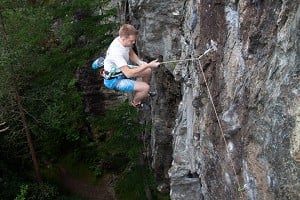


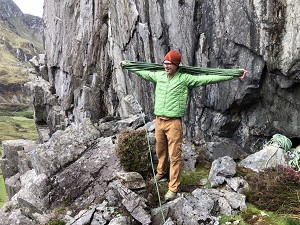

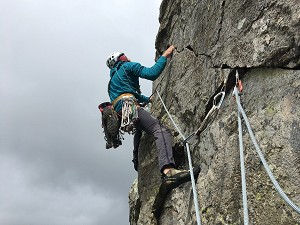
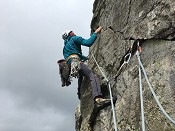
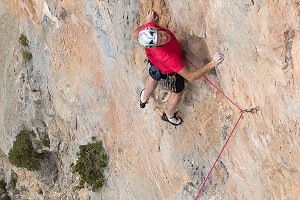
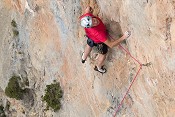


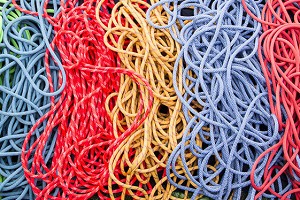

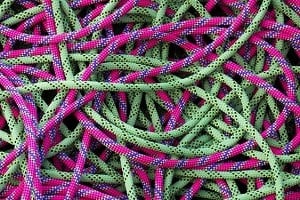
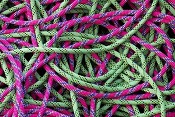
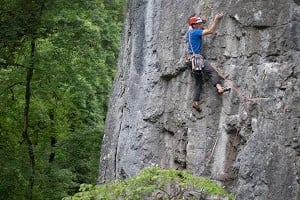
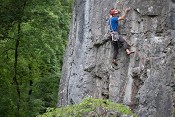
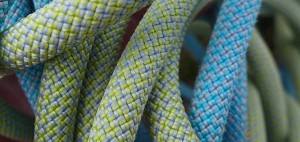

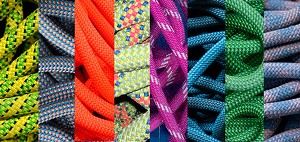

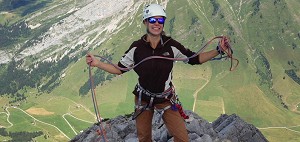

Comments
It would be interesting to see how the Edelrid and Mammut cut resistant ropes compared with Beals unicore ropes. I bought Beal ropes specifically because of the unicore thing because I hate it when the rope rubs over an edge when stripping a wandering sport route. It gives me the heebie jeebies.
This was exactly my first thought too
I had the same thoughts whilst testing as well. Would love to see some test comparisons across different tests from Mammut, Edelrid test labs as well as some more real life cut testing and durability testing. Maybe it's something we can look into in the future for group tests.
Although I think we'll need a more willing volunteer for this sort of testing... https://www.youtube.com/watch?v=K9Wzx-9JzsI
John, with respect to this comment:
the UIAA currently have a working group on a cutting/abrasion resistance test. As you can imagine, and as we saw with the proposal and withdrawal of the UIAA sharp edge test as part of UIAA 101, that this kind of testing is thwart with difficulty and devising a test that is both repeatable, reproducible AND gives results that are meaningful to real world scenarios is no mean feat. A dynamic fall with a ropes moving across an abrasive/cutting surface does not lend itself to simple solutions!
I think it is all credit to the rope manufacturers trying to push the current rope design to meet the challenge and hopefully the cooperation of those manufacturers and the UIAA will deliver a test and meaningful information to the consumer in the future.
Hi, Funnily enough I remember seeing you posting about this on a previous forum thread. I can imagine this is no small challenge, and I don’t expect a meaningful solution to emerge soon. Although it would be interesting to understand the work from UIAA so far on this issue. From my days studying and working in engineering, I remember that dynamic scenarios are generally much tougher to model, so I can only imagine how complex developing any sort of test for these cases must be with a plethora of parameters that you are trying to control and understand. The comment wasn't meant as a slight on any manufacturer or those working on this within the industry, as I think any sort of innovation in rope design, and research into testing is more than worthwhile. Either way it's a fascinating subject and would be great to learn more about.